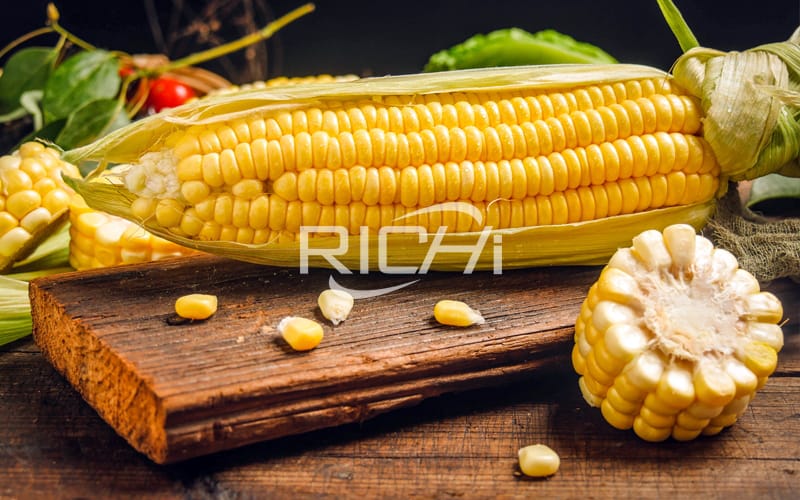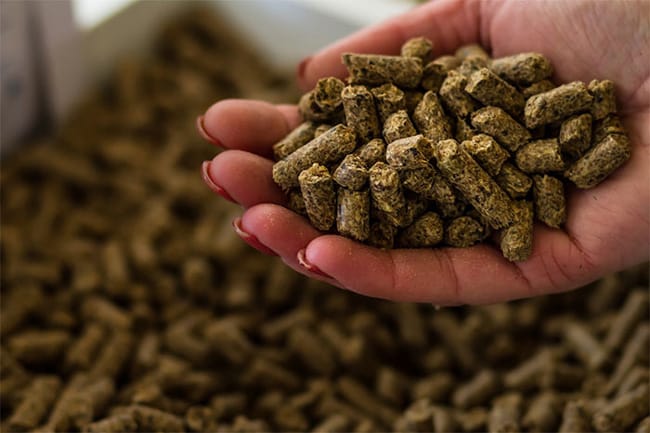Recently, there was such a news that the Agriculture and Animal Husbandry Bureau of a county in China organized agricultural technicians to go to the countryside and enter the village to promote and guide farmers to silage whole corn, and strive to reduce agricultural production and economic losses due to the continuous high temperature and drought this year. Minimize it to avoid nutrient loss of corn stalks caused by the late silage time.
This Bureau of Agriculture and Animal Husbandry formulated the "Corn Silage Work Implementation Plan" in time, transferred 162 competent technical backbones, formed 6 technical service working groups, and went to 156 villages in 12 towns and villages throughout the county to carry out a one-month visit Households publicize and guide the masses to carry out corn silage work, develop grass and livestock industry, and realize the use of animal husbandry to supplement food and agriculture. Increase mobilization and publicity to improve work efficiency. Various technical service working groups issued "A Letter to Farmer Friends" to publicize the corn silage subsidy policy, publicize the benefits of silage, and mobilize farmers to seize the opportunity to actively carry out corn stalk silage in the form of comparison and settlement, on-site demonstration and guidance. , To achieve sufficient storage, and strive to complete silage of 100,000 cubic meters of corn, and coated silage of more than 10,000 tons, to ensure that farmers’ income in severe drought years and livestock and poultry inventory does not decrease, and to achieve sufficient grass in drought years. Stably promote the elimination of the rich and the poor. Strengthen silage technical guidance to ensure safe production.

1. Advantages of silage
Ensilage is the fresh stems and leaves of plants used as feed. Silage is rich in chlorophyll. The rational use of green feed by farmers can save feeding costs and improve economic benefits. So let's understand the advantages of silage and how to make silage.
(1) There are abundant sources of silage raw materials. Crop straws, various weeds, pastures, sweet potato seedlings, leaves, etc. can all be used as silage.
(2) The silage is rich in nutrients. During production, the whole straw (including stalks, stems and leaves) can be used for silage, and the green and leaves of the straw can be preserved.
(3) Silage is soft, juicy, sweet and sour, and has good palatability. It is very suitable for feeding beef cattle, and beef cattle also like to eat.
(4) The silage production method is simple and cost-effective, and is not affected by climate and season. The nutritional value of forage can be preserved for a long time (years) without changing. It can meet the needs of beef cattle feeding green feed in winter and spring (or throughout the year).
(5) Silage can make use of abundant local forage resources, especially the use of a large amount of corn stalk silage to feed beef cattle, which greatly reduces the waste of corn stalks.
2. The method of whole plant corn silage
There are many ways of silage, according to the scale of breeding, geographical location, economic conditions and breeding habits can be divided into: cellar storage, bag storage, bag storage, pool storage and tower storage, can also be stacked on the plane, etc. . Several commonly used silage methods and methods are now introduced as follows:
①Cellar storage
Cellar storage is the most common and ideal way of silage. Although the one-time investment is larger, the cellar is durable and has a long service life. It can be produced all year round. The storage capacity is large and the quality of the silage is guaranteed.
According to the terrain and groundwater level, silage silos can be divided into three types: underground, above ground and semi-underground.
★Site selection: Generally, it should be in a place where the terrain is high, the groundwater level is low, the leeward is sunny, the soil is firm, and it is close to the feeding house, and it is convenient to make and take silage.
★The shape and size of the cellar: The cellar is generally rectangular in shape. The depth, width and length of the cellar can be designed according to the number of cattle and sheep raised, the length of the feeding period and the amount of forage that needs to be stored. The four walls of the silage silo should be flat and smooth. It is best to build them with bricks or stones, and then put them on cement. It is also possible to build a crypt with adobe, but the bottom and the surrounding areas should be plastered with cement, or all covered with plastic film. The Sheep Home believes that we must pay attention to preventing water seepage and air leakage. It must be able to seal, prevent air from entering, and facilitate the filling and compaction of forage. The bottom of the cellar must have a certain slope from one end to the other, or one end must be built into the shape of the bottom of the pot to remove excess juice. Generally, 500-600 kg of corn can be silaged per cubic meter pit.
★Production process: The length of the cutting of the raw material is generally about 1cm-3cm (if too long, it is not conducive to compaction, the cut is short, it can be pressed more firmly during filling, which is beneficial to remove the air. It is also beneficial to the future The use of silage is also convenient for livestock to eat to reduce waste). The Sheep Home reminds that the chopped silage materials should be loaded into the silage silage in time, and the method of crushing and packing while compacting can be adopted.
When loading the cellar, step on every 20-40 cm or so (it would be more ideal if there is a machine to step on it), and pay special attention to stepping on the sides and corners of the silage cellar. At the same time, check the water content of the raw materials (generally required to be about 65%), and shorten the time of microbial aerobic activity during the silage process as much as possible. If the whole cellar cannot be filled on the same day or at one time, a layer of plastic film can be immediately covered on the raw materials in the cellar, and the cellar will continue the next day. The silage raw materials generally require a sugar content of not less than 2.0% (if there is not enough sugar in the raw materials, it will not meet the needs of lactic acid bacteria). Silage corn is rich in sugar (generally more than 4%), so there is no need to add other substances with high sugar content during silage. Remember to compact during the silage process, otherwise too much oxygen will cause mildew on some raw materials, which is one of the main reasons for the failure of silage.
Although the silage raw materials are stamped during the cellar loading, they will still sink after several days. This is mainly due to the influence of gravity, the reduction of gaps between raw materials and the loss of water. For this reason, when the cellar is filled, the silage material needs to be filled again until the raw material is 50 cm to 80 cm above the edge of the cellar, and then covered with a whole piece of plastic film, and then covered with 1-2 layers of straw bales. For straw mats and other objects, the soil is finally compacted with a thickness of about 30 cm to 40 cm and the surface is smoothed, and the top of the cellar rises into a steamed bun shape.
As the silage matures and the soil pressure, the silage in the cellar will slowly sink, cracks will appear on the soil layer, and air leakage will occur. In rainy days, rainwater will seep in from the cracks and spoil the silage. In some cases, the silo surface is lower than the ground due to improper stepping when loading the cellar, and water will accumulate in rainy days. Therefore, it is necessary to observe the silage cellar at any time, find cracks or sink, and cover with soil in time to ensure the success of the silage.
Generally, after 40 to 50 days of closed fermentation (20-35°C/day), it can be taken and fed to livestock. (Preserved silage can be stored for several years or more than ten years).

②Package storage
Wrapped silage is a method of using mechanical equipment to complete straw or fodder silage. It is a new type of forage silage technology researched and developed on the basis of traditional silage.
★Production of wrapped silage
The crushed silage raw materials are compacted and bundled with a high-density baler, and then wrapped with a stretch film by a baler to create an anaerobic fermentation environment and finally complete the lactic acid fermentation process. This method of celebration has been widely recognized and used by European countries, the United States, Japan and other developed countries in the world. Some areas in China have also begun to experiment with this silage method and gradually commercialize it.
★The advantages of wrapped silage
Like conventional silage, wrapped silage has the characteristics of less loss of dry matter, long-term storage, soft texture, sweet and sour fragrance, good palatability, high digestibility, and less loss of nutrients. At the same time, there are several advantages: the production is not restricted by time and location, and is not restricted by the storage location. If it can be processed in the shed, it is not restricted by the weather. Compared with other silage methods, the wrapping silage process has better sealing properties, less nutrients lost through juice, and there is no secondary fermentation. In addition, the transportation and use of wrapped silage are more convenient, which is conducive to its commercialization. This is of great significance for promoting the industrialization of silage processing.
★Disadvantages of wrapped silage
Although wrapped silage has many advantages, it also has some shortcomings. One is that this kind of packaging is easily damaged. Once the stretch film is damaged, yeast and mold will multiply in large numbers, leading to deterioration and moldy silage. Second, it is easy to cause uneven moisture content between different bales, and differences in fermentation quality, which brings difficulties to feed nutrition design, and it is difficult to accurately grasp the appropriate supply amount.
③Storage
Plane stack silage is suitable for farmers with small scales, such as raising 3-5 cows or 20-50 sheep. This method can be used. Plane stacking silage is characterized by a short use period and low cost. One-time labor input is small. When making, pay attention to the moisture content of the silage raw materials (generally required to be around 65%), compact and airtight. These links will directly affect the quality of the silage.
【More info about corn for animal poultry cattle feed】
How to make cattle feed using maize corn
Feed processing requirements for puffed corn
Hot sale 4-6t/h corn maize grinder hammer mill for chicken poultry feed making line
Corn DDGS Feed Application in Animal Poultry Pig Cattle Fish Feed Production Plant


